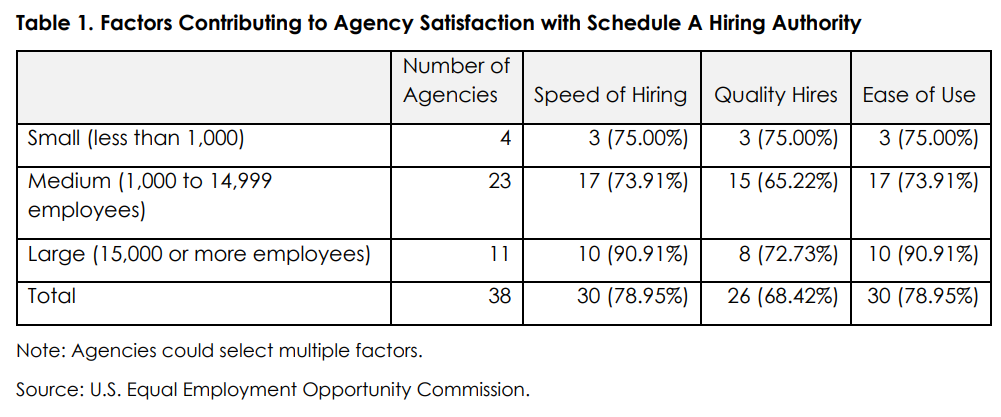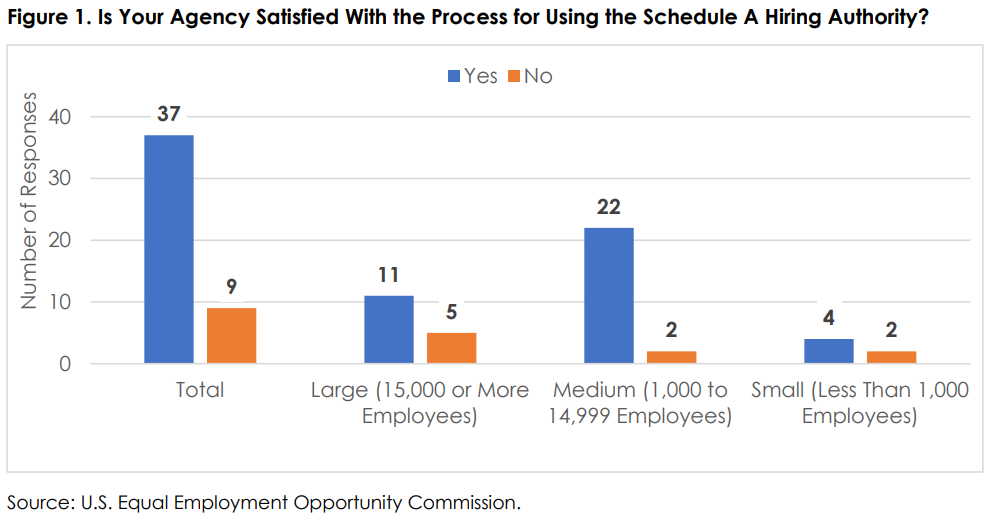Agencies navigating federal hiring challenges for employees with disabilities
Many agencies say the Schedule A hiring authority benefits the federal hiring process, but some agencies still face difficulties and confusion with using it.
Agencies are beginning to think a little more creatively about how to hire employees with disabilities, but at the same time, federal hiring managers are getting caught up in some red tape.
Although a majority of agencies say the Schedule A hiring authority leads relatively quickly to high-quality hires, the Equal Employment Opportunity Commission found in a March 20 report that some agencies face difficulties with understanding or using the authority.
In some cases, HR staff find it difficult to figure out what documentation is needed, EEOC found after surveying 55 agencies about their use of the authority. Some agencies don’t have enough HR employees who are familiar with the Schedule A process in the first place.
“It’s a little confusing at times, and I don’t blame agencies — it can be a confusing situation,” Wendy Doernberg, a senior attorney advisor in EEOC’s Office of Federal Operations, said in an interview.
But if implemented properly, Schedule A can “save a lot of time and energy for agencies, instead of going through the competitive hiring authority,” Doernberg added.

The Schedule A hiring authority lets agencies avoid the lengthy competitive hiring process and instead non-competitively appoint candidates with disabilities to federal jobs. Hiring managers typically aren’t required to publicly post Schedule A positions on USAJobs.gov or another website. But agencies are still expected to use Schedule A as a supplement to their typical federal hiring procedures.
Many agencies have found success with using Schedule A, EEOC said. And more recently, agencies have become more creative with how they use it — for instance, by collaborating with colleges and universities on recruitment, or reaching out to disability-related employee resource groups to reach more candidates.
“[Some agencies also] had an internship program for students with disabilities, and then after the internship program, they’ve been able to hire students using the Schedule A hiring authority,” Doernberg said.

Other agencies said they benefited from coordination among their offices for HR, EEO and diversity, equity, inclusion and accessibility (DEIA). Some have also opted to post USAJobs announcements to collect lists of candidates eligible for Schedule A hiring — and then keep that list of qualified applicants to be considered for future openings.
“They’ve said to federal hiring officials, ‘instead of just going through the competitive hiring authority, why don’t you look at some of these Schedule A applicants that we’ve collected for you who we think might be a good fit for the positions that you have,’” Doernberg said.
Using the federal hiring option also aligns with efforts from the Biden administration to advance DEIA in the federal workforce. One part of the 2021 executive order called on agencies to assess their use of Schedule A and look for opportunities to reach more applicants with disabilities.
There are other methods aside from Schedule A that agencies can use to recruit employees with disabilities, such as an excepted veteran hiring authority, or the Pathways Program, EEOC said in the report. In fact, EEOC found in its survey that some agencies are more inclined toward other hiring authorities, since Schedule A’s trial period for employees is two years, much longer than what’s standard.
“Some agencies preferred [the excepted veteran hiring authority] because it does not include the two-year trial period required under Schedule A and allows for conversion to the competitive service within 60 days,” EEOC said.
Telework makes accommodations easier
Once employees with disabilities are in the door at agencies, there are further expectations and obligations for agencies to, in part, help ensure staff retention — in some cases by offering Personal Assistance Services (PAS).
When the COVID-19 pandemic began, EEOC said it initially anticipated agencies would struggle to continue providing PAS, or reasonable accommodations, in the workplace amid what it expected would be massively heightened telework and higher numbers of accommodations request.
But on the whole, agencies stepped up to the plate — and then some. In fact, more than 90% of agencies that EEOC surveyed said telework did not affect their ability to provide accommodations, EEOC said in a March 20 report.
“We expected there to be some clutter,” Rodney Yelder, a senior program analyst in EEOC’s Office of Federal Operations, said in an interview. “But we found that no, that’s not the case … The pandemic, as bad as it was, augmented the program. We found that we can accommodate [employees] a little bit better under telework than we can in the building.”
In certain cases for employees with disabilities, agencies are required to provide PAS. Those are reasonable accommodations to support a person with a disability who’s qualified for a job, but who also needs assistance with certain actions such as eating or caring for oneself during work hours.
But Yelder said increased telework made providing PAS easier for many agencies. Family members who may be supporting employees with PAS can reach them more easily at home, without needing to travel to the office, or having to commute back and forth.
These policies at agencies can also help with DEIA goals and expectations from the Biden administration, especially with the use of telework.
“We’re encouraging folks to adopt PAS procedures, embrace it, and use this more because we can hire more people,” Yelder said.
EEOC has a host of resources available on its website aiming to help agencies, federal hiring managers and other staff members support federal applicants and federal employees with disabilities.
Copyright © 2024 Federal News Network. All rights reserved. This website is not intended for users located within the European Economic Area.
Drew Friedman is a workforce, pay and benefits reporter for Federal News Network.
Follow @dfriedmanWFED






